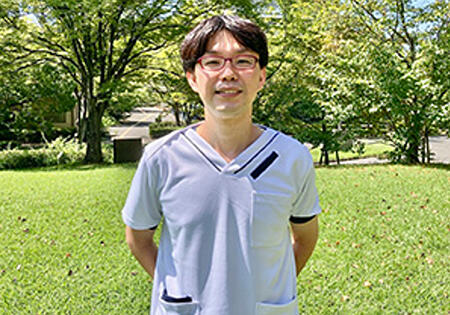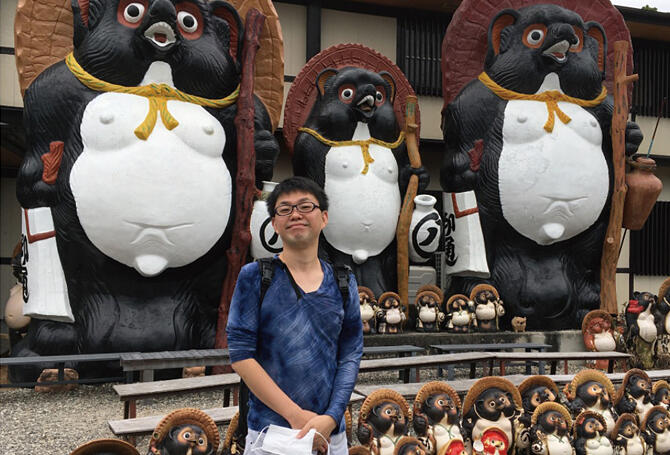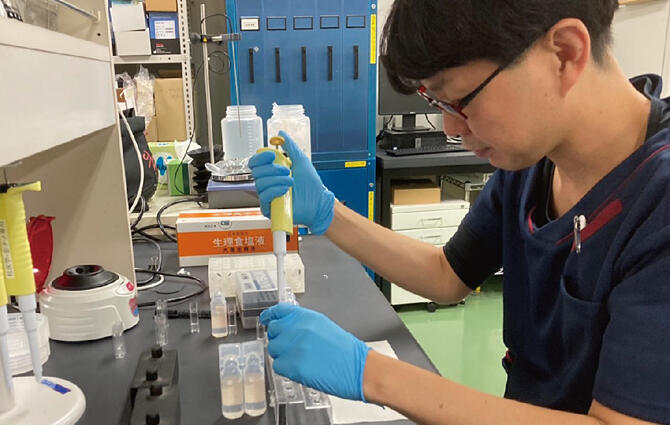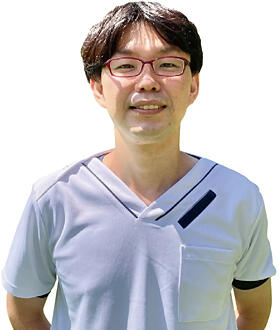
Assistant Professor, Department of Nuclear Medicine and Tracer Kinetics, Graduate School of Medicine, Osaka University
Q1. What inspired you to engage in radiology research?
A1. Putting my knowledge and techniques about organic synthesis to use, and getting major inspiration from studying abroad in China
I consistently worked on organic synthesis from my bachelor's degree through to my postdoc, particularly on the synthesis of natural organic compounds, which play an important role in the body. Natural products exist in nature but isolating and obtaining them in large quantities is difficult. Because of this, the use of synthetic chemistry methods to obtain them in single-compound form is enabling detailed functional analysis and investigation of them for the first time. While pursuing my research, I became fascinated with the creative process and how I could imagine and design compounds.
At the same time, I was also determined to utilize my knowledge and skills in organic synthesis to create medicines that are useful to the world. From this, I learned that there are drugs - such as the agents used in Positron Emission Tomography (PET) diagnostic imaging - which combine radioactive isotopes with organic molecules and decided to engage in radiology research. Studying abroad in China was also a major inspiration for me. The competition was fierce, and the pressure was also high, but I felt that I really grew as a researcher.

Q2. Can you tell us some specific details about your research?
A2. Nuclear medicine that attacks cancer from within the body - Synthesis of 211At labeled gold nanoparticles with the aim of developing new pharmaceuticals
Cancer treatment options include surgery, chemotherapy, and radiotherapy, but they have drawbacks such as being highly invasive, having significant side effects, and involving radiation exposure respectively. Safer and more effective treatment methods are required. The ERATO Project that I am participating in is researching radionuclide therapy that uses radiation to attack cancer from within the body.
Specifically, we are studying intravenous infusion of Astatine-211 (211At). 211At is an isotope that emits alpha particles. Compared to beta and gamma particles, alpha particles travel a shorter distance but have higher energy. These properties have the benefits of acting strongly only on the target tumor and hardly affecting surrounding healthy cells at all.
At the same time, 211 At tends to accumulate in the thyroid gland, making neutralization of this characteristic necessary when treating conditions other than thyroid cancer. To make 211At reach and stop at the target tumor, we're working on the molecular design and synthesis of drugs using metal nanoparticles that can solidify the 211At.
However, metal nanoparticles remain in the body for an extended period without being metabolized, so it is important to evaluate how they subsequently become distributed. Using the Compton camera developed by Professor Jun Kataoka at Waseda University, the current project Research Director, we are working on methods of imaging gamma particles emitted when metal nanoparticles are radioactivated.
Q3. What would you like to say to aspiring researchers?
A3. I recommend that they acquire a broad range of knowledge, and have the courage to dive into a new world of study
I joined the Osaka University Graduate School of Science right after returning from China, but after a while shifted to the Graduate School of Medicine. I came to understand just how tough it really is to work across disciplines. Even if the goal is the same - creating cancer drugs - the approaches taken at schools of science and medicine are quite different. Taking plants as an example, in science you would investigate the conditions for growing good fruit, but in medicine you would start with the fruit and eat it to evaluate the flavor.
I'm currently using my experience in both schools to create a framework that enables smooth collaboration throughout the research team. I would be really happy to catalyze new sparks of inspiration by being the person who brings researchers together. If you aim to become a researcher, don't take an aversion to anything. Follow your interests and embrace the challenges you find. To achieve this, I recommend that you acquire a broad range of knowledge by actively engaging with surrounding fields while, of course, deeply developing your own specialization. Even if something looks like a failure, it will be valuable experience for your future endeavors. Don't hesitate! Have the courage to dive into a new world of study.
(Text: Kazuyuki Katayanagi)


Profile
Yuichiro Kadonaga
Born in Osaka
In 2014 he completed his Ph.D. in chemistry at the Graduate School of Science, Osaka University.
After post-doctoral work at the College of Chemistry and Molecular Engineering, Peking University, and as an Assistant Professor at the Institute for Radiation Sciences, Osaka University, he assumed his present role from the 2022 academic year.
From the same year, he has also been a researcher on the ERATO KATAOKA Line X-ray and Gamma-Ray Imaging Project.




